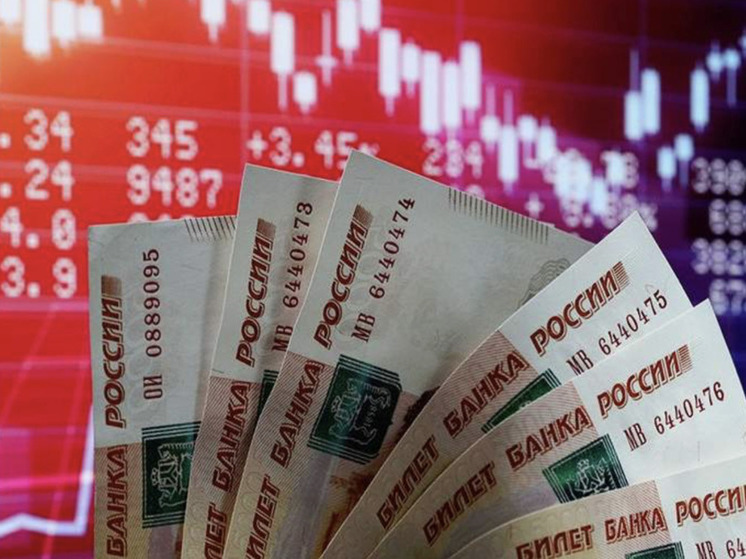Yuan trap and preferential mortgage bubble
Next Friday, February 16, the next meeting of the Board of Directors of the Bank of Russia will be held, at which the issue of the level of the key rate will be considered. The slowdown in inflation gives hope that the regulator will take a pause and will not change the rate. In addition, attention last week was attracted by news from China, where the largest banks began to block the operations of Russian companies. The head of the analytical department of the BKF bank, Maxim Osadchiy, spoke about the likely decision of the Central Bank, elections, currency problems and the risks of the internal market of MK.

— Although the Central Bank of the Russian Federation is an independent institution, it, of course, takes into account the political situation. Raising the key rate immediately before the elections is a negative signal, so unless absolutely necessary, it is better to keep it at the same level. It would, of course, be great to reduce this indicator, but, alas, inflation risks do not provide grounds for such a decision. Annual inflation in the Russian Federation as of January 29 slowed to 7.32% from 7.42% at the end of December (according to the Central Bank’s methodology). It is clear that such a slowdown is within the statistical error and, in addition, does not take into account the seasonal effect of increased demand before the holidays and decreased demand after the holidays.
— The regulator is not omnipotent. One of the main factors of inflation — rising wages due to labor shortages — has not gone away. In addition, enterprises are forced to hire less qualified workers at higher wages. Accordingly, they work less and earn more, which increases inflationary pressure. After all, inflation is “unearned money.”
You should also remember about the growth of social payments, primarily pensions, which increased by 7.5% from January 1, which undoubtedly contributes to inflation .
—Nevertheless, this increase made its contribution to the rise in prices.
— Of course, it’s a bit high, but much lower than in Zimbabwe (130%), Argentina (100%) or Turkey (45%).
— The consolation should be that inflation in Russia is much lower than this trio. In Russia in January, annual inflation was 7.3%, while in Zimbabwe it was 34.8%, in Turkey 64.9%, and in Argentina it exceeded 200%. So I’m ready to repeat: if the Bank of Russia had not tightened monetary policy and raised the key rate, then our prices would have risen, like in Turkey or, God forbid, like in Argentina.
In the meantime, the Central Bank of the Russian Federation expects a reduction in the key rate this year. However, the target inflation level of 4%, which the regulator is targeting, is still very, very far away. In the base scenario, the Bank of Russia forecasts the average key rate for 2024 in the range of 12.5–14.5% per annum.
— Well, for example, a sharp drop in prices for hydrocarbons. In addition, an alarming signal is the latest news that the main Chinese bank for Russian importers, Zhejiang Chouzhou Commercial Bank, has stopped all settlements with the Russian Federation due to the threat of secondary sanctions, and some other Chinese banks are tightening their services to domestic companies. Financial flows between Russia and our current main trading partner China have slowed down. As Vysotsky sang, “If a friend suddenly turns out to be neither a friend nor an enemy, but so…”
— If the trend of Chinese banks stopping settlements with the Russian Federation continues, then a much larger currency trap may arise than the one into which Russian companies found themselves in India, when they received Indian rupees for their goods (primarily oil) which they overstocked «above the roof.» Meanwhile, the rupee is not a freely convertible currency; exchanging it for other currencies is problematic.
— Such a threat undoubtedly exists. Russia, having completed a “pivot to the East,” has accumulated huge reserves of Chinese currency: for example, the National Welfare Fund had accumulated 227.5 billion yuan worth $32 billion as of February 1. Deposits of individuals in yuan in Russian banks as of December 1, 2023 reached $7, 3 billion. But the yuan is also not a freely convertible currency. Taking into account the unfavorable changes taking place in the Chinese economy — the crisis of the construction industry, the massive bankruptcy of developers, the fall of the stock market, deflation, etc. — excessive peg to the yuan creates increased risks.
— Yes, and some more! A powerful risk factor in the domestic market is the preferential mortgage bubble. A sharp cooling of preferential mortgages could lead to a collapse of the real estate market and an economic crisis. In the acute phase of the crisis, a sharp increase in the key rate may be required.
— But still, we should not expect higher rates on deposits, the auction of “unprecedented generosity”, when banks offered rates at deposits close to 20% are likely to end. The most interesting instrument in the first quarter of 2024 remains deposits in rubles. Taking into account currency and interest rate risks, it makes sense to open them for a period of 3-6 months. Not forgetting that state insurance covers deposits up to 1.4 million rubles. Of course, this is not relevant for deposits in state-controlled banks.
— There is hardly any point in rushing to open these newfangled deposits. Moreover, until March 2024 there are restrictions on foreign currency deposits, according to which the bank will return the deposit not in yuan, but in rubles at the bank’s “internal” (read: arbitrary) exchange rate. It is highly likely that these restrictions will be extended at least until the end of this year.


